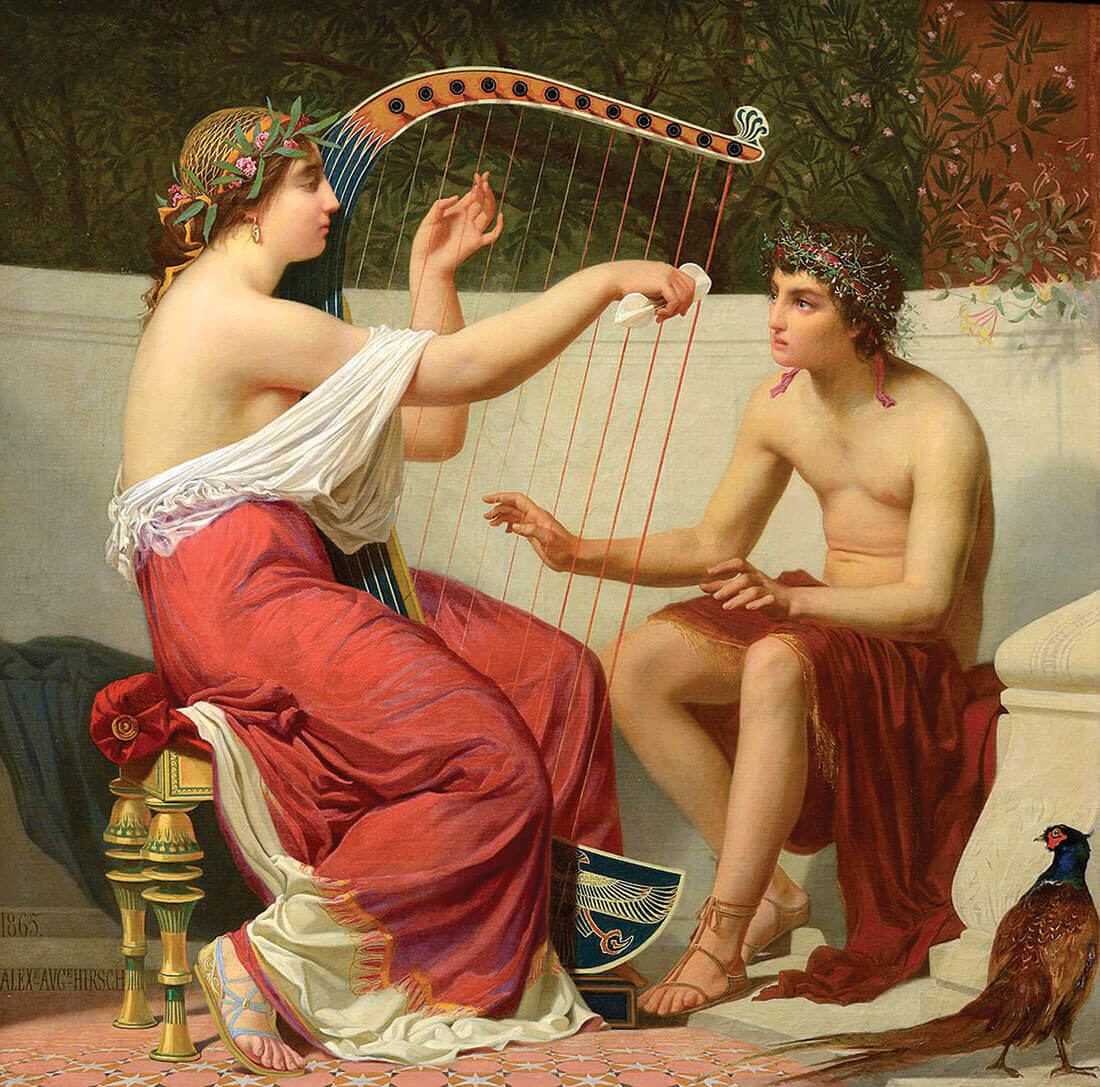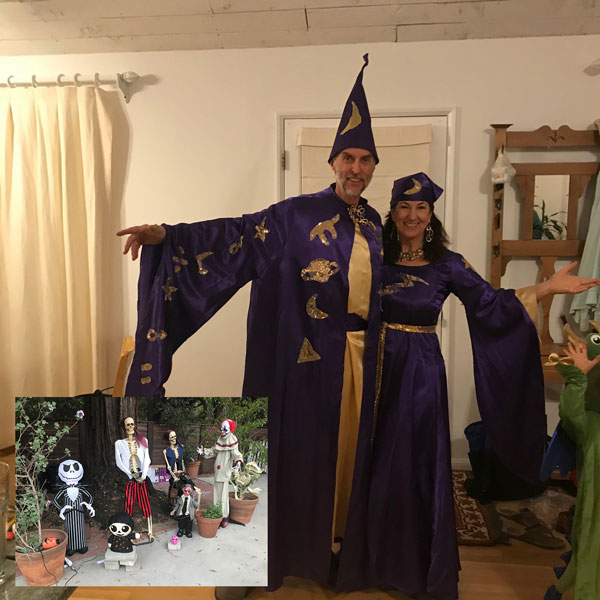Art for ArtŌĆÖs Sake
By Joel Bellman
For some 15 years, I lived a short and pleasant walk from the La Brea Tar Pits, the Page Museum, and the Los Angeles County Museum of Art. Almost every weekend, my wife and I would stroll down to peruse LACMAŌĆÖs permanent collection or take in the latest special exhibition. Friday and Saturday nights were given to the expertly curated film series at the MuseumŌĆÖs Bing Theater, where LACMAŌĆÖs Director of Film Programs, Ronald HaverŌĆöclad in his customary safari hiking gearŌĆöwould welcome the audience with witty and informed commentary about the eveningŌĆÖs program.
After our two sons were born, the routine expanded to include visiting the Page, what the boys called the ŌĆ£bone museum,ŌĆØ where you could watch volunteers in their glassed-in lab painstakingly cleaning the tar off the tiny fossils and carefully collating them. And every day on the sunny patio, busker Charlie Cox, dressed as a traveling frontier entertainer and a fixture at the museum since 1975, accompanied himself on guitar or banjo and played for change, cracking corny jokes to delight the children.
ItŌĆÖs now been more than two decades since I left my former Miracle Mile neighborhood. Haver died far too young from AIDS in 1993; his movie theater and most of the other LACMA buildings we regularly visited have been completely demolished to make way for a controversial new $750 million replacement structure designed by Swiss architect Peter Zumthor.
As LACMA undertakes the most extensive and costly renovation since it first opened in 1965, the CountyŌĆÖs Natural History Museum, of which the Page is a part, in December 2019 selected New York architects, Weiss/Manfredi, to lead a master planning team of its own to reimagine the eastern part of the CountyŌĆÖs vast Wilshire Boulevard museum campus. Like other museums in the pandemic, the Page has been closed to visitors since mid-March, but the outdoor park remains open and I hope that somewhere, somehow, Charlie Cox, now about 75, is still making music.
What occasions these reflections are fond memories of having the privilege of introducing my children from an early age to those art, culture, music- and history-filled visits, and the grim contrast with todayŌĆÖs coronavirus-blasted arts hellscape. Museums, movie houses, and live music and dramatic venues, like the Theatricum Botanicum, remain closed, and most singers, dancers, actors, and musicians have been functionally unemployed for more than eight months. The lucky ones may have found ways to practice their art in isolation, or post solo or collaborative videos free online to pass the time and keep themselves in the public eye. The unlucky ones are condemned to watch their skills rust away in obscurity, robbed of even the restaurant work that traditionally supports struggling artists in between paying gigs.
Donald Trump was infamously an enemy of the artsŌĆöunless you count misusing funds from his now-shuttered foundationŌĆÖs charitable assets to secretly purchase massive portraits of himselfŌĆöand he repeatedly attempted to zero out funding for the National Endowment for the Arts and the National Endowment for the Humanities. The vaunted CARES Act coronavirus relief package passed in March included nearly $250 million for arts and culture organizations nationwideŌĆöwhich may sound like a lot, but represents less than two annual budgets for LA CountyŌĆÖs art and natural history museums alone. The now-expired Paycheck Protection Program offered a bit of additional relief for arts workers, but not much.
Like those hapless animals caught in the La Brea Tar Pit, the dying Trump administration now flails and flounders as it disappears into the primordial ooze.
Looking ahead, what might we expect from a Biden-Harris administration?
The arts community greeted Joe BidenŌĆÖs election with cautious optimism, noting that both he and Kamala Harris have in the past pushed back on proposed arts budget cuts and supported modest funding increases and some arts-related legislation, but nothing dramatic or visionary. Some commercially successful artists and their well-heeled patrons, hoping to restore some trickle-down tax breaks for wealthy collectors, will likely hope in vain.
In a more perfect world, we might hope for the kind of truly robust investment in artists and the arts that characterized FDRŌĆÖs Works Progress Administration, which from 1935-43 subsidized and even directly hired individual artists, writers, and performers and funded numerous programs through its Federal Project Number One, which included projects for writers, musicians, artists, theatrical creators, and historians.
Will Geer was one of them, as part of the innovative but short-lived Project 891, the classic theatre branch of the Federal Theatre Project run by producer John Houseman and the 21-year-old Orson Welles.
While the arts industries were and are a vital part of regional economies like Los Angeles, New York, and Chicago, the FDR administration was also aiming higher: that in desperate times, artists no less than other workers deserved to be gainfully and productively employed, by the government itself, if need be, in their chosen professional field, and that the arts, no less than business, agriculture, or labor, deserved to be ŌĆ£an immediate concern of the ideal commonwealth.ŌĆØ
higher: that in desperate times, artists no less than other workers deserved to be gainfully and productively employed, by the government itself, if need be, in their chosen professional field, and that the arts, no less than business, agriculture, or labor, deserved to be ŌĆ£an immediate concern of the ideal commonwealth.ŌĆØ
The arts industry does more than put food on the table for its creatives; those artists in turn challenge our intellect and nourish our souls, demanding that we strive to become our better selves. ItŌĆÖs said that politicians campaign in poetry and govern in prose. But is it really asking too much of a Biden-Harris administration to take that more bold and adventurous philosophy to heartŌĆöand perhaps try to govern in poetry as well?
William Carlos Williams put it this way, in ŌĆ£Asphodel, That Greeny FlowerŌĆØ (1962):
My heart rouses
┬Ā┬Ā┬Ā┬Ā┬Ā┬Ā thinking to bring you news
┬Ā┬Ā┬Ā┬Ā┬Ā of something
that concerns you
and concerns many men. Look at
┬Ā┬Ā┬Ā┬Ā┬Ā┬Ā┬Ā┬Ā┬Ā┬Ā┬Ā┬Ā┬Ā┬Ā┬Ā what passes for the new.
You will not find it there but in
┬Ā┬Ā┬Ā┬Ā┬Ā┬Ā┬Ā┬Ā┬Ā┬Ā┬Ā┬Ā┬Ā┬Ā┬Ā┬Ā despised poems.
┬Ā┬Ā┬Ā┬Ā┬Ā┬Ā┬Ā┬Ā┬Ā┬Ā┬Ā┬Ā┬Ā┬Ā┬Ā┬Ā┬Ā┬Ā┬Ā┬Ā┬Ā┬Ā┬Ā┬Ā┬Ā┬Ā┬Ā┬ĀIt is difficult
to get the news from poems
┬Āyet men die miserably every day
┬Ā┬Ā┬Ā┬Ā┬Ā┬Ā┬Ā┬Ā┬Ā┬Ā┬Ā┬Ā┬Ā┬Ā┬Ā┬Ā┬Ā┬Ā┬Ā┬Ā┬Ā┬Ā ┬Ā┬Ā┬Ā┬Ā┬Ā for lack
of what is found there.
Calliope Teaching Orpheus, Alexandre-Auguste Hirsch, 1865













